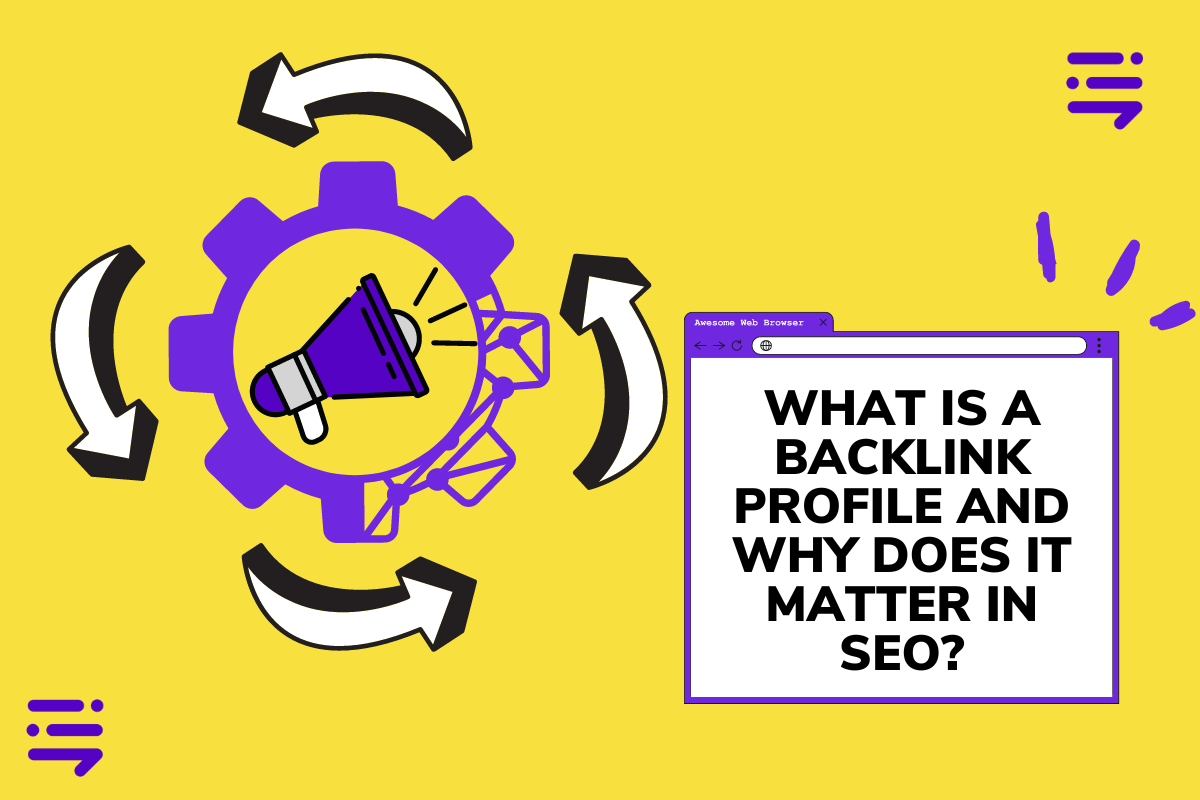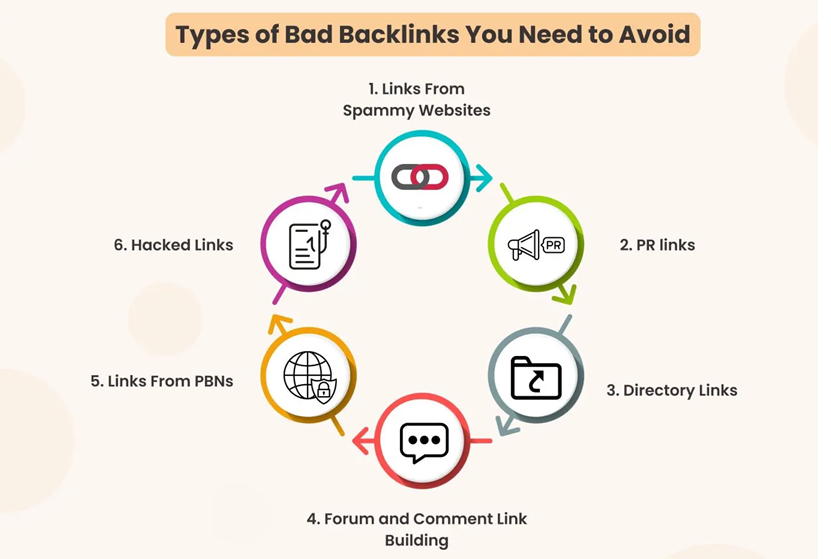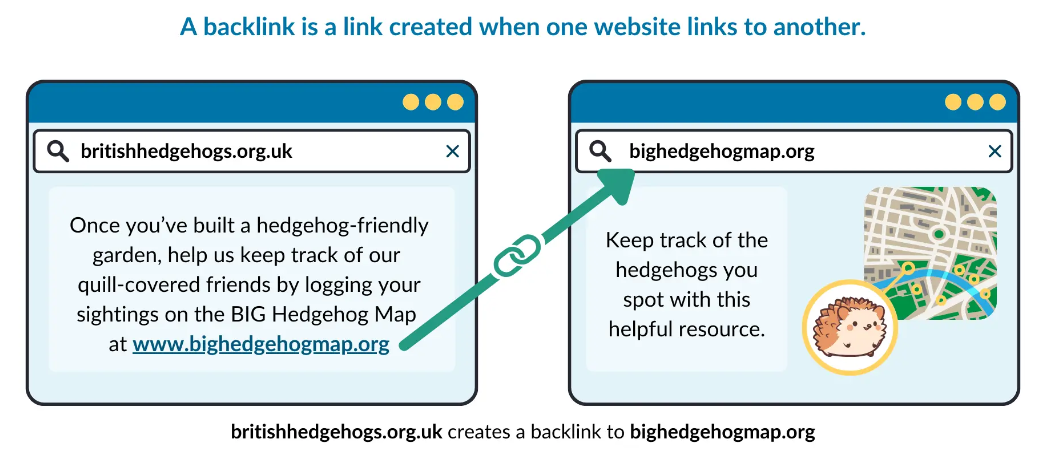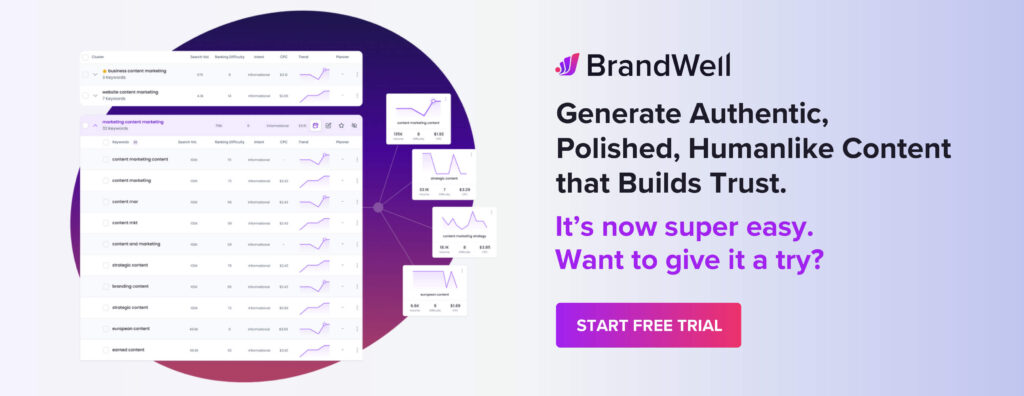Discover top guides, trends, tips and expertise from AIO Writers
What is a Backlink Profile And Why Does It Matter in SEO?
Julia McCoy
Sunday, 14th Apr 2024
What is a backlink profile?
A backlink profile refers to the collection of all incoming links pointing to your website from various external sources. By analyzing your backlink profile as well as that of your competitors, you can tweak your link-building strategy to boost your website’s reputation on the internet.
A strong backlink profile can be the difference between obscurity and visibility in the digital world.
In this blog post, we’ll delve into the intricacies of backlink profiles, how to analyze this data, why they are important for SEO, and how you can leverage them to enhance your website’s performance.
Whether you’re new to SEO or looking to brush up on fundamentals, understanding the concept of what is a backlink profile is key.
Table Of Contents:
- What is a Backlink Profile?
- How to Analyze Your Backlink Profile
- Factors Influencing Your Backlink Profile
- What Makes a Bad Backlink Profile?
- Maintaining a Good Backlink Profile
- FAQs – What is a Backlink Profile
- Conclusion
What is a Backlink Profile?
A backlink profile is essentially a collection of all the links pointing to your website from other sites on the web. It’s like a digital resume that showcases your site’s popularity and authority.
According to Moz, “Backlinks are incoming links to a webpage. When a webpage links to any other page, it’s called a backlink.”
Components of a Backlink Profile
When analyzing your backlink profile, there are several key components to consider:
- Quantity: The total number of backlinks pointing to your site.
- Quality: The authority and relevance of the sites linking to you.
- Diversity: The variety of domains and IP addresses linking to you.
- Anchor text: The clickable text used in the hyperlink.
- Link placement: Where the link appears on the referring page (e.g., content, footer, sidebar).
A healthy backlink profile will have a mix of high-quality links from diverse, relevant sources with natural anchor text distribution.
On the flip side, a spammy or unnatural link profile (e.g., too many links from low-quality sites or over-optimized anchor text) can hurt your rankings.
Importance of a Strong Backlink Profile
So why should you care about your backlink profile?
Because it’s one of the most important factors in determining your site’s search engine rankings.
Google and other search engines view backlinks as “votes of confidence” from other websites. The more high-quality, relevant sites that link to you, the more authoritative and trustworthy your site appears in the eyes of search engines.
In fact, a study by Backlinko found that the number of domains linking to a page correlated with higher rankings more than any other factor.
How to Analyze Your Backlink Profile
Now that you know what is a backlink profile, let’s dive into how to actually analyze and monitor your links.
First things first: you need a reliable backlink analysis tool to help you audit your backlink profile. Some popular options include:
- Ahrefs
- Moz Link Explorer
- Semrush Backlink Analytics
- Majestic
These tools will give you valuable insights into your link profile, such as your total number of backlinks, referring domains, anchor text distribution, and more.
Once you have your tool of choice set up, follow these steps to analyze your backlink profile:
- Check your total number of backlinks and referring domains. This will give you a high-level overview of your link popularity.
- Look at the authority metrics (e.g., Domain Rating, Domain Authority) of your referring domains. The higher the metric, the more valuable the link.
- Analyze your anchor text distribution. A natural profile will have a mix of branded, generic (e.g., “click here”), and keyword-rich anchor text.
- Identify any spammy or low-quality links that could be hurting your rankings. Add these to a disavow file to tell Google to ignore them.
- Compare your backlink profile to your competitors. This will give you an idea of where you stand in your industry and uncover link opportunities.
In addition to third-party tools, don’t forget about the free Google Search Console. GSC’s “Links” report shows you your site’s top linked pages, anchor text, and referring domains.
While not as comprehensive as other backlink tools, GSC is a great way to get a quick snapshot of your link profile and identify any major red flags.
Plus, it’s straight from the source – Google itself.
Factors Influencing Your Backlink Profile
As you analyze your backlink profile, it’s important to understand the various factors that influence the quality and value of your links.
Anchor Text Ratio and Diversification
Anchor texts are the clickable text used in a hyperlink. Believe it or not, the words you use in your anchor text can have a big impact on your rankings.
In the early days of SEO, it was common practice to stuff exact-match keywords into anchor text to tell Google what the linked page was about. But today, that’s considered a spammy tactic that can get you penalized.
Instead, aim for a natural mix of anchor text types:
- Branded: Your company or website name (e.g., “Content Hacker”)
- Generic: Call-to-action phrases (e.g., “click here”, “read more”)
- Naked URL: The raw URL (e.g., “https://contenthacker.com”)
- Keyword-rich: Includes relevant keywords (e.g., “SEO tips”)
It’s ideal to have a mix of branded anchor text, partial match keywords, and natural phrases to maintain a natural link profile. A good rule of thumb is to keep your exact-match keyword anchors below 1-2% of your total links.
Link Quality
When it comes to link quality, relevance and authority are key. A single link from high-authority sites in your niche is worth more than dozens of links from spammy, irrelevant sites.
Some factors to consider when evaluating link quality include:
- Domain authority: The overall strength and trustworthiness of the linking domain.
- Relevance: How related the linking page’s content is to your own.
- Link placement: Links in the main content are more valuable than footer or sidebar links.
- Follow vs. nofollow: “Follow” links pass link equity, while “nofollow” links don’t. But both can still drive traffic and diversify your link profile.
Backlinks from websites with high domain authority and trustworthiness are highly valuable. Links from reputable sources are more likely to positively impact your own website’s authority and rankings.
Your backlink profile and domain authority (DA) go hand-in-hand. In general, the more high-quality links you have pointing to your site, the higher your DA will be.
Domain authority is a search engine ranking score developed by Moz that predicts how likely a website is to rank in search results. It ranges from 1 to 100, with higher scores indicating a greater ability to rank.

While DA is not a metric used by Google, it can be a useful way to gauge the overall strength and health of your website – and your backlink profile is a big factor in that.
Link Diversification
Just like with anchor text, diversity is key when it comes to your overall link profile. You want a mix of link types from various sources, not just a bunch of links from the same domain or IP address.
In fact, Search Engine Journal states that “a lack of diversity can indicate unnatural link acquisition and subject a site to ranking penalties.”
Aim to get links from a variety of reputable sources, such as:
- Industry blogs and publications
- News sites
- Educational institutions (.edu)
- Government websites (.gov)
- Business directories
- Social media profiles
A good backlink profile consists of links from a diverse range of sources, including blogs, news sites, directories, social media platforms, and industry-specific websites. Diverse sources indicate a natural and organic link profile.
Link Placement
Where your links appear on a page also matters. Contextual backlinks embedded within relevant content are considered more valuable than sidebar or footer links. These links provide additional context and relevance to the linked content.
So when building links, aim to get in-content links surrounded by relevant text. These “contextual” links carry more weight and drive more qualified traffic.
Social Signals
While not direct backlinks, social signals (likes, shares, comments) on social media platforms can indirectly influence SEO and reflect positively on your website’s visibility and authority.
A good backlink profile is not just about quantity but more importantly about quality, relevance, and diversity. Building and maintaining a strong backlink profile requires a strategic approach focused on acquiring high-quality links from reputable sources within your industry.
What Makes a Bad Backlink Profile?
It’s all too easy to make link-building mistakes that can hurt your SEO efforts. When analyzing your backlink profile, look out for these common pitfalls:
Linking from Irrelevant Sites
One of the biggest mistakes you can make is pursuing backlinks from websites that have nothing to do with your industry or niche.
For example, a backlink checker tool might reveal that a gambling website is linking to your blog about puppy training. Not only do these links carry little SEO value, but they can also raise red flags with search engines.
Remember, relevance is key when it comes to link building. Focus on earning links from sites that are closely related to your own content and target audience.
Spammy or Low-Quality Links
Another common sign of a bad backlink profile is having low-quality or spammy backlinks. This includes tactics like buying links, participating in link schemes, or using automated link-building tools.
Avoid links from spammy, low-quality websites or those engaged in black-hat SEO practices. Such links can harm your website’s reputation and rankings.
Not only are these practices ineffective, but they can also result in penalties from search engines. Google’s algorithms are getting better and better at identifying and devaluing spam backlinks so it’s simply not worth the risk.
Toxic Backlinks
Even if you’re careful about the types of links you pursue, there’s always a chance that some toxic backlinks will slip through the cracks. These are links from spammy, low-quality, or penalized websites that can hurt your search engine rankings.
That’s why it’s important to regularly audit your backlink profile and identify any potentially harmful links. Backlink analysis tools can help you spot these toxic backlinks so you can take steps to have them removed or disavowed.
Read more about backlink removal here.

Maintaining a Good Backlink Profile
To keep your backlink profile healthy and effective over the long term, you need to regularly monitor and maintain it. Here are some key strategies to keep in mind.
Identify and Reclaim Lost Hyperlinks
Over time, it’s natural for some of your backlinks to disappear. Maybe a website goes offline, or a webmaster decides to remove your link during a content update. Whatever the reason, it’s important to keep an eye out for these lost hyperlinks.
Use tools like Ahrefs or Moz to regularly check for lost or broken backlinks. When you identify a missing link, reach out to the webmaster and politely ask if they can restore it. If the link was removed intentionally, see if you can provide an updated or improved piece of content that they’d be willing to link to instead.
Fix Broken Hyperlinks
Just like external links pointing to your site can break, so too can internal links within your own content. These broken hyperlinks not only frustrate users but can also hurt your SEO by preventing link equity from flowing through your site.
Make it a habit to regularly scan your website for broken links using tools like Screaming Frog or Google Search Console. When you find a broken link, either update it with a new URL or redirect it to a relevant page.
Ensure Steady and Natural Backlink Profile Growth
While it’s important to actively pursue new backlink opportunities, you also want to make sure your link profile grows at a steady, natural pace. A sudden influx of new links can sometimes trigger spam signals with search engines.
Focus on consistently creating link-worthy, high-quality content and promoting it to relevant audiences. Over time, you’ll naturally attract a diverse range of high-quality backlinks that will help improve your search engine rankings and drive more organic traffic to your site.
Integrate Content Marketing Strategies
Link building and content marketing go hand-in-hand. By creating valuable, informative content that resonates with your target audience, you’ll naturally attract more backlinks over time.
Make sure to integrate your link-building efforts with your overall content marketing strategy. As you brainstorm new content ideas, think about the types of websites and influencers that might be interested in linking to it. Then, as you promote your content, make sure to specifically reach out to those potential linkers.
Incorporate Public Relations
Finally, don’t overlook the power of public relations when it comes to building and maintaining a strong backlink profile. By leveraging PR tactics like press releases, media pitches, and expert interviews, you can attract high-quality links from authoritative news sites and industry publications.
The key is to focus on creating newsworthy content and stories that journalists and bloggers will want to cover. Whether it’s a new study, an innovative product launch, or a thought-provoking opinion piece, look for ways to position your brand as an authority in your niche. The more you can get people talking about your business, the more natural backlinks you’ll earn over time.
FAQs – What is a Backlink Profile
What is an example of a backlink?
A backlink could be a blog mentioning your website in their latest post and linking to you.
How do I find my backlink profile?
Use backlink checker tools like Ahrefs or Semrush to see who’s linking to you.
How do I create a backlink for my profile?
Create compelling content others want to share, or try guest blogging on relevant sites with your link included.
Are profile backlinks good?
If they’re from reputable sites within your niche, yes. They boost SEO and credibility big time.
Conclusion
So there you have it – a definition of what is a backlink profile and how to keep yours strong and effective.
Link building is not just about collecting any links; it’s about gathering quality ones that enhance your site’s authority and credibility. The process includes auditing existing links, identifying gaps, and strategizing ways to build connections with reputable sites within relevant industries.
Building an effective backlink profile doesn’t take shortcuts or quick fixes but rather a consistent effort toward creating valuable content that naturally attracts high-quality backlinks over time.

UNLOCK YOUR POTENTIAL
Long Headline that highlights Value Proposition of Lead Magnet
Grab a front row seat to our video masterclasses, interviews, case studies, tutorials, and guides.




